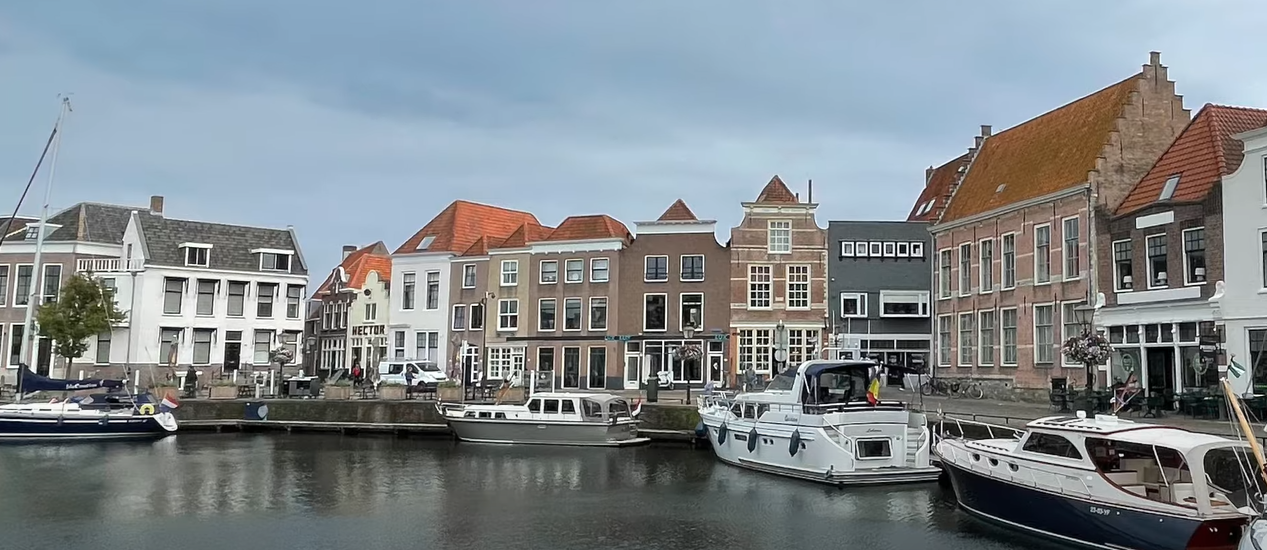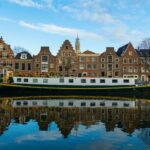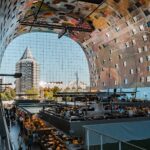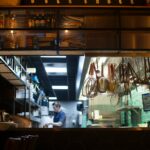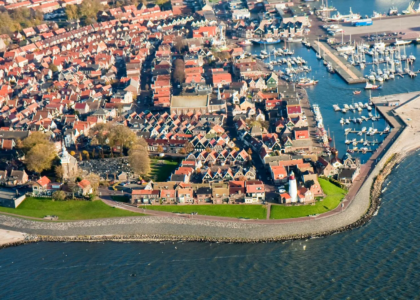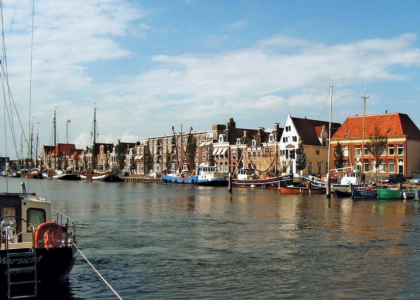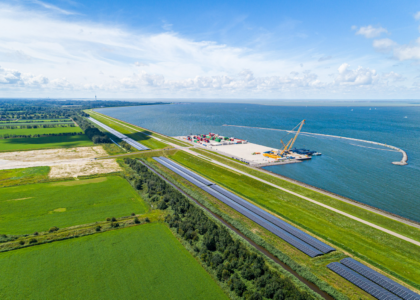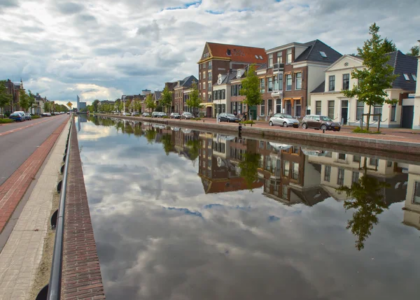Zeeland, a captivating province located in the southwestern region of the Netherlands, is truly unique in its structure, composed primarily of a series of islands and peninsulas. The name ‘Zeeland’, literally translating to ‘Sea-Land’, resonates with the province’s intimate connection with the sea, delineated by numerous bodies of water and captivating coastlines. The province is made up of six primary landforms:
- Schouwen-Duiveland: Schouwen-Duiveland, the largest island in the province, is renowned for its stunning beaches and picturesque landscapes, making it a haven for beachgoers and nature enthusiasts. The island is home to several nature reserves, the most prominent being the Plan Tureluur, known for its vibrant avian life;
- Tholen: Tholen is a treasure trove of serene villages and exceptional fishing spots. It is characterized by tranquility and an unrushed pace of life, providing a rejuvenating retreat away from the bustle of city life;
- Noord-Beveland: The smallest of Zeeland’s islands, Noord-Beveland, is a canvas of expansive landscapes and scenic beaches. Its calm and pristine environment is a feast for the senses;
- Walcheren: Walcheren is steeped in history, marked by its various towns like Middelburg and Veere, which tell tales of the past. The island also houses impressive dune-lined beaches, adding to its natural charm;
- Zuid-Beveland: Agriculture forms the backbone of Zuid-Beveland. The island is renowned for its flourishing fruit cultivation, with spring adorning the landscape in an array of blossoms;
- Zeeuws-Vlaanderen: Offering a fusion of Dutch and Flemish cultures, Zeeuws-Vlaanderen stands out as the only part of Zeeland directly connected to the rest of the Netherlands. Terneuzen, the region’s economic hub, is a bustling city worth exploring.
Historical and Cultural Significance
The province of Zeeland, nestled in the south-west of the Netherlands, is renowned for its abundant historical heritage and cultural vibrancy. The echoes of major historical events such as the Eighty Years’ War, the significant constructions under Napoleon’s rule, and the tragic North Sea flood of 1953 are still perceptible in the region’s character and landscape.
Historical Highlights
- Eighty Years’ War: This significant conflict spanned from 1568 to 1648 and was integral to the creation of an independent Dutch state. Zeeland’s key role in the war is remembered through various historical sites and museums.
- Napoleonic Constructions: Napoleon Bonaparte’s influence on Zeeland is visible in the region’s fortifications and other architectural highlights.
- North Sea Flood (1953): A catastrophic event that dramatically altered the geography of Zeeland and led to significant advancements in flood defence technology.
Zeeland’s historical legacy is embodied in its towns, cities, and monumental structures. Two locations, in particular, capture the essence of the region’s past.
Middelburg
The provincial capital of Zeeland, Middelburg, is a treasure trove of historical monuments, with over 1,100 scattered throughout the city. Some of the notable structures include:
- The Middelburg Abbey: A striking gothic-style edifice that dates back to the 12th century. It serves as a reminder of Zeeland’s medieval past;
- Town Hall: A magnificent structure known for its gothic architecture and ornate details;
- Kloveniersdoelen: A former militia building now transformed into a bustling cinema and restaurant.
Veere
Veere, a charming town in Zeeland, symbolizes the province’s prosperous maritime history. Key highlights include:
- The Marina: A picturesque docking area that harks back to the town’s seafaring days;
- Veere Tower: A landmark medieval structure that stands tall against the skyline;
- Narrow Lanes and Medieval Structures: The quaint lanes and preserved structures provide a tangible link to Veere’s affluent past.
Museums in Zeeland
Zeeland’s rich history is well-curated in various museums scattered across the province.
- Zeeuws Museum, Middelburg: This museum houses an extensive collection of artifacts that encapsulate the essence of Zeeland’s past and present.
- Watersnoodmuseum, Ouwerkerk: It chronicles the events of the 1953 flood, showcasing the resilience and innovative spirit that emerged in its aftermath.
- MuZEEum, Vlissingen: It delves into Zeeland’s maritime history, displaying a wide range of seafaring artifacts and artworks.
The historical and cultural significance of Zeeland, through its events, architecture, and museums, continues to be a source of fascination for history enthusiasts and tourists alike. It offers a unique insight into the area’s transformative journey over the centuries.
Unique Flora, Fauna and Natural Attractions
The sea’s constant presence has deeply shaped Zeeland’s natural environment, rendering a landscape filled with beautiful coastlines, sandy beaches, and an extensive network of dykes. The Delta Works – a series of construction projects developed as a countermeasure against flood disasters – is a remarkable testament to Dutch engineering and resilience against the sea’s power. Neeltje Jans, an artificial island created during the Delta Works project, now serves dual roles as an informative, interactive water park and a flourishing nature reserve.
Beyond its renowned beaches, Zeeland is a hotspot for biodiversity, with nature reserves like the Oosterschelde National Park showcasing the province’s rich ecological variety. As the largest national park in the Netherlands, it is a sanctuary for numerous unique bird species and marine life, including seals and porpoises. Its dynamic landscapes, marked by tidal mudflats, salt marshes, and seagrass beds, make it a paradise for nature lovers and bird watchers.
Gastronomy: A Blend of Land and Sea
Given its geographical positioning, it comes as no surprise that seafood is the cornerstone of Zeeland’s gastronomy. The province is famed for its mussels, oysters, and lobsters, as well as a wide range of fish species. Each dish presents a fresh taste of the sea, a gastronomic delight for seafood aficionados.
Beyond seafood, Zeeland has an enticing variety of local specialties. The ‘Zeeuwse bolus’ is a sweet, cinnamon-infused pastry that pairs perfectly with a cup of coffee. The ‘Zeeuwse babbelaars’, a traditional, hard butter candy, is a nostalgic treat that takes you back to the old times.
Highlights of Zeeland Cuisine
| Food Type | Description |
|---|---|
| Mussels | These are often served as the centerpiece of a traditional Zeeland meal, accompanied by fries, bread, and a variety of sauces |
| Oysters | Enjoy these either raw or slightly cooked, with a squeeze of lemon for a tangy contrast |
| Lobsters | A gourmet treat served in many forms, from grilled to bisques |
| Zeeuwse Bolus | This sweet, spiral-shaped pastry is rolled in dark brown sugar and infused with a hint of cinnamon |
| Zeeuwse Babbelaars | A type of hard butter candy that is a favorite amongst locals and visitors alike |
Conclusion
From its historically rich towns to its stunning natural landscapes, Zeeland presents an array of experiences that celebrate its close bond with the sea. The province’s ability to fuse the old with the new, the land with the sea, and the Dutch with the Flemish creates an environment that is uniquely its own. In Zeeland, every visit becomes more than just a trip; it’s an immersive experience in a way of life that celebrates the sea and all that it brings. Whether you are a history buff, a nature lover, or a culinary explorer, Zeeland awaits to take you on a journey of discovery and delight.
FAQ
The mild maritime climate of Zeeland makes it a suitable destination year-round. However, the summer months (June to August) are the most popular for beach and water activities.
Zeeland is well-connected with an efficient network of trains, buses, and ferries. Moreover, the flat terrain and dedicated cycling paths make biking a popular mode of transportation.
Zeeland hosts a plethora of events throughout the year. Concert at Sea, an annual music festival, and Mussel Day in Yerseke, celebrating the start of the mussel season, are notable highlights. Additionally, the International Film Festival in Vlissingen is a must-visit for film enthusiasts.

